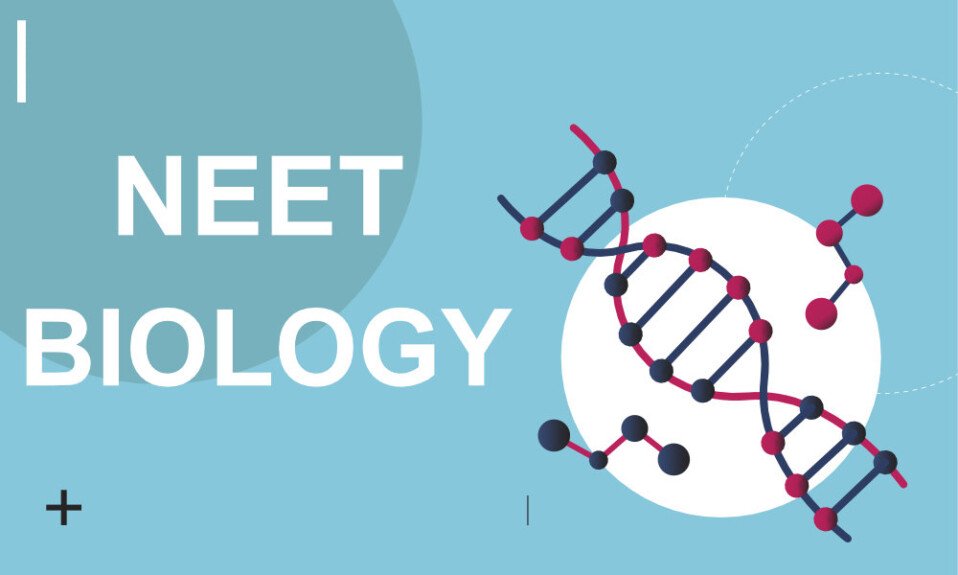1:A peculiar cytochrome is observed in bacteria and it can react with molecular oxygen, what is it?
(a) Cyt b
(b) Cyt c
(c) Cyt d
(d) Cyt o
Answer:(d) Cyt o
2:The genetic material in HIV is
(a) ds DNA
(b) ss DNA
(c) s RNA
(d) None of these
Answer:(a) ds DNA
3:Which one of the following mutagens act only on replicating DNA?
(a) Ethidium bromide
(b) Nitrosoguanidine
(c) Acridine orange
(d) None of above
Answer:(c) Acridine orange
4:Poly A tail is frequently found in
(a) Histone in RNA
(b) Bacterial RNA
(c) eukaryotic RNA
(d) TRNA
Answer: (c) eukaryotic RNA
5:Which of the following is an example of RNA virus?
(a) SV 40
(b) T4 phage
(c) Tobacco mosaic virus
(d) Adenovirus
Answer:(c) Tobacco mosaic virus
6:Genomic DNA is extracted, broken into fragments of reasonable size by a restriction endonuclease and then inserted into a cloning vector to generate chimeric vectors. The cloned fragments are called
(a) Clones
(b) Genomic library
(c) mRNA
(d) None of these
Answer:(b) Genomic library
7:Transgenic animals are produced when GH gene fused with
(a) MT gene
(b) GH
(c) GRF
(d) FIX
Answer:(a) MT gene
8:In which medium the hybridoma cells grow selectively?
(a) Polyethylene glycol
(b) Hypoxanthine aminopterin thymidine
(c) Hypoxanthine-guanine phosphoribosyl transferase
(d) Both b and c
Answer:(b) Hypoxanthine aminopterin thymidine
9:The enzymes which are commonly used in genetic engineering are
(a) Exonuclease and ligase
(b) Restriction endonuclease and polymerase
(c) Ligase and polymerase
(d) Restriction endonuclease and ligase
Answer:(a) Exonuclease and ligase
10:A successful hybridoma was produced by fusing
(a) Plasma cells and plasmids
(b) Plasma cells and myeloma cells
(c) Myeloma cells and plasmids
(d) Plasma cells and bacterial cells
Answer:(b) Plasma cells and myeloma cells
11:The technique involved in comparing the DNA components of two samples is known as
(a) Monoclonal antibody techniques
(b) Genetic finger-printing
(c) Recombinant DNA technology
(d) Polymerase chain reaction
Answer:(b) Genetic finger-printing
12:Plasmids are ideal vectors for gene cloning as
(a) They can be multiplied by culturing
(b) They can be multiplied in the laboratory using enzymes
(c) They can replicate freely outside the bacterial cell
(d) They are self replicating within the bacterial cell
Answer:(d) They are self replicating within the bacterial cell
13:Humans normally have 46 chromosomes in skin cells. How many autosomes would be expected in a kidney cell?
(a) 46
(b) 23
(c) 47
(d) 44
Answer:(d) 44
14:Pasteur effect is due to
(a) Change from aerobic to anaerobic
(b) Providing oxygen to anaerobically respiring structures
(c) Rapid utilization of ATP
(d) Non synthesis of ATP
Answer:(b) Providing oxygen to anaerobically respiring structures
15:A mechanism that can cause a gene to move from one linkage group to another is
(a) Trans location
(b) Inversion
(c) Crossing over
(d) Duplication
Answer:(a) Trans location
16:The smallest unit of genetic material that can undergo mutation is called
(a) Gene
(b) Cistron
(c) Replicon
(d) Muton
Answer:(d) Muton
17:The two chromatids of metaphase chromosome represent
(a) Replicated chromosomes to be separated at anaphase
(b) Homologous chromosomes of a diploid set
(c) Non-homologous chromosomes joined at the centromere
(d) Maternal and paternal chromosomes joined at the centromere
Answer:(a) Replicated chromosomes to be separated at anaphase
18:Malate dehydrogenase enzyme is a
(a) Transferase
(b) Hydrolase
(c) Isomerase
(d) Oxidoreductase
Answer:(d) Oxidoreductase
19:In E.Coli att site is in between
(a) Gal and biogenes
(b) Bio and niacin genes
(c) Gal and B genes
(d) None of these
Answer:(a) Gal and biogenes
20:The best vector for gene cloning
(a) Relaxed control plasmid
(b) Stringent control plasmid
(c) Both a and b
(d) None of these
Answer:(a) Relaxed control plasmid
21:A gene that takes part in the synthesis of polypeptide is
(a) Structural gene
(b) Regulator gene
(c) Operator gene
(d) Promoter gene
Answer:(a) Structural gene
22:DNA replicates during
(a) G1 – phase
(b) S – phase
(c) G2 – phase
(d) M – phase
Answer:(b) S – phase
23:A human cell containing 22 autosome and a ‘Y’ chromosome is probably a
(a) Male somatic cell
(b) Zygote
(c) Female somatic cell
(d) Sperm cell
Answer:(b) Zygote
24:Crossing-over most commonly occurs during
(a) Prophase I
(b) Prophase II
(c) Anaphase I
(d) Telophase II
Answer:(a) Prophase I
25:DNA-replication is by the mechanism of
(a) Conservative
(b) Semiconservative
(c) Dispersive
(d) None of the above
Answer:(b) Semiconservative
26:Production of RNA from DNA is called
(a) Translation
(b) RNA splicing
(c) Transcription
(d) Transposition
Answer:(c) Transcription
27:Nucleic acids contain
(a) Alanine
(b) Adenine
(c) Lysine
(d) Arginine
Answer:(b) Adenine
28:What are the structural units of nucleic acids?
(a) N-bases
(b) Nucleosides
(c) Nucleotides
(d) Histones
Answer:(c) Nucleotides
29:The most important function of a gene is to synthesize
(a) Enzymes
(b) Hormones
(c) RNA
(d) DNA
Answer:(a) Enzymes
30:One of the genes present exclusively on the X-chromosome in humans is concerned with
(a) Baldness
(b) Red-green colour baldness
(c) Facial hair/moustache in males
(d) Night blindness
Answer:(b) Red-green colour baldness




